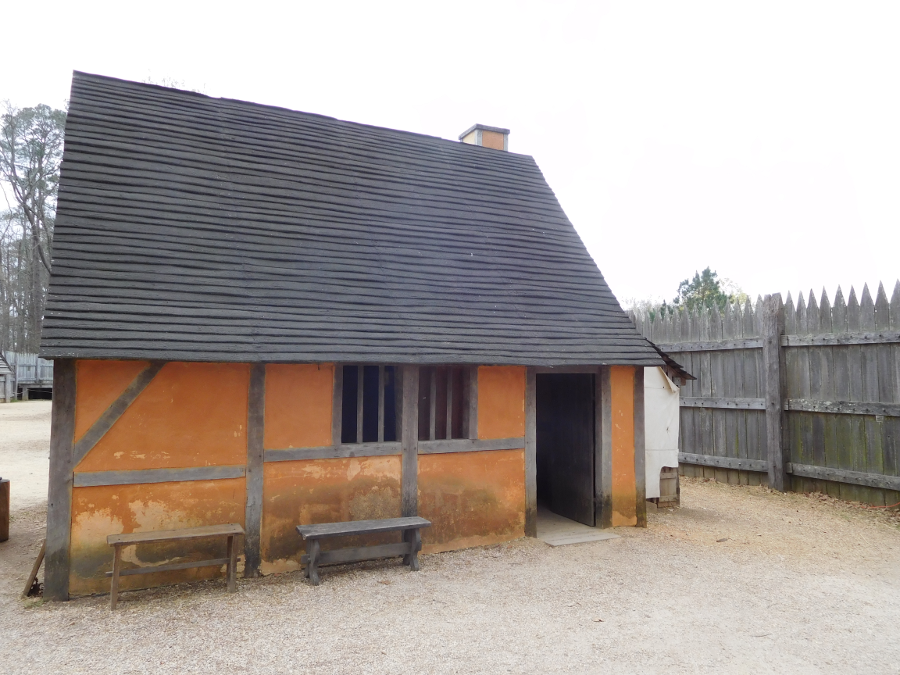
the first colonist to be executed in Virginia may have been held under guard very briefly, in a structure like this reconstructed building at Jamestown Settlement

the first colonist to be executed in Virginia may have been held under guard very briefly, in a structure like this reconstructed building at Jamestown Settlement
The jail cells used to house inmates between sentencing and execution is known as "death row." Virginia's current death row is at Sussex I State Prison. Prisoners are transported to the Greensville Correctional Center in Jarratt for execution by lethal injection or use of the electric chair.1
The first execution in Virginia after the English colonists arrived was at Jamestown. The council established by the Virginia Company to govern Jamestown in 1607 sentenced Captain George Kendall to death six months after arriving in Virginia. Kendall was shot to death on the same day as the sentence, but the prisoner may have been incarcerated very briefly in a structure within the fort at Jamestown right after the council declared its verdict.
Death by gunfire was considered more honorable than execution by hanging. Sir Thomas Gates sentenced one mutinous colonist to death in 1610 while stranded on Bermuda after the shipwreck of the Sea Venture. Gates had previously pardoned other mutineers, but made an example of Henry Paine. He did grant Paine's request to be shot rather than hung:2
Native Americans in Virginia also applied the death penalty. John Smith claimed he was about to be executed until a "rescue" by Pocahontas. In 1609, Powhatan had his warriors use clubs to crush the skulls of two colonists who had fled Jamestown twice and betrayed the colony. That execution occurred at Orapakes, to which Powhatan had retired to get further away from the English. "Death Row" for the two traitors consisted of being dragged a few yards from where Powhatan pronounced the punishment to a nearby log.3
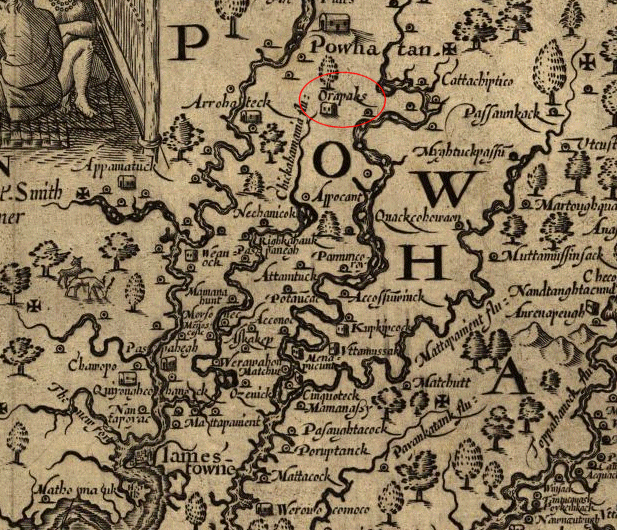
in his capital at Orapakes, Powhatan executed two men trying to betray the colony at Jamestown
Source: Library of Congress, John Smith's Map of Virginia
The Virginia Company controlled the colony until King James revoked its charter in 1624. In 1623, Daniel Frank became the first man executed in Virginia by hanging. He had stolen a calf belonging to former governor George Yeardley along with another man. The accomplice was pardoned, but Frank made history. The first women to be hung in Virginia were Jane Champion in 1633, and Margaret Hatch in 1634.4
In colonial times, white convicts were executed at Jamestown or (after 1699) at Williamsburg. If the potential punishment was death and the defendant was white, the case was sent to Jamestown for trial by the General Court. The county courts established after 1634 did not try capital cases.
Executions by hanging occurred almost immediately after sentencing by the General Court, with no extended delay for further appeals. There was no death row with inmates awaiting results from lengthy appeals. The General Court met in various statehouse structures at Jamestown, and a gallows was located nearby. A likely location is the edge of the Pitch and Tar Swamp, which visitors see today when crossing the bridge from the National Park Service visitor center to the fort.5
The General Assembly moved the state capital to Williamsburg in 1699 and ordered construction of the Public Gaol (jail) near the new state capitol in 1701. Prisoners condemned to death by the General Court, which met in the State Capitol, were kept briefly in the colonial jail until being taken to the triangular gallows on Capitol Landing Road and executed. Visitors to Colonial Williamsburg can see the original jail structure along with reconstructions of associated buildings.6
William and Mary archeologists discovered the site of the gallows and published their report in 1992, but that part of Williamsburg's history has not been reconstructed. An estimated 170 people were hung at that location, with the last believed to be a slave in 1820.7
John Hoogling and two other pirates were executed by hanging in 1700. Hoogling swam off the pirate ship La Paix before it surrendered. Those who stayed on the ship negotiated a clemency deal, but Hoogling and two other pirates found on another ship were "gibbeted." After being hung from a tree, the bodies were left on public display.
After the pirate Blackbeard was killed in 1718, 13 of his crew were brought back to Virginia . Apparently four of those pirates were gibbeted at Hampton, where an Admiralty Court had condemned them to death. At Hampton, the pirates were incarcerated on board the HMS Pearl before trial and then execution, so at least one ship may have served as a Death Row in Virginia.8
County courts ultimately gained authority to try capital cases when the defendants were slaves. Those who were convicted and sentenced to death were executed by hanging from a tree near the local courthouse, so cells in many local jails could have served briefly as a "death row." There is a Gallows Road in Fairfax County leading from the site of the first county courthouse near modern-day Tysons to Alexandria, but there is no evidence that a gallows was ever constructed or used there. There was a gallows built at the site of the second county courthouse, now Market Square in Alexandria.9
After the state penitentiary was built in 1800 in Richmond, prisoners condemned to death were kept in that prison on Spring Street until executed. There was a Death Row in Richmond for nearly two centuries.
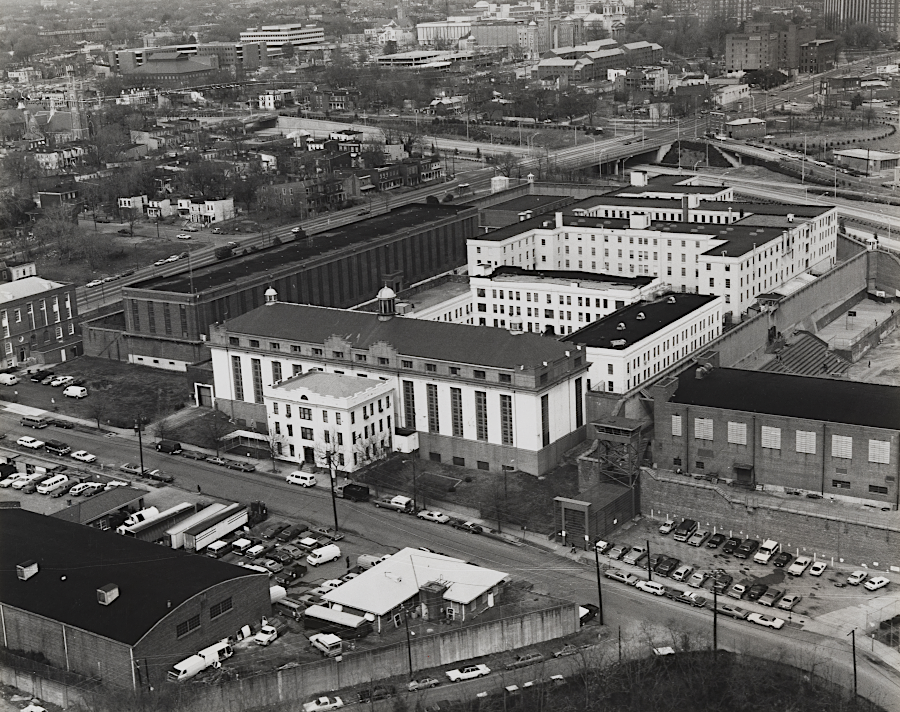
hangings and then electrocutions were done at the Virginia State Penitentiary between 1800-1990
Source: Governor of Virginia, Governor Northam Signs Law Repealing Death Penalty in Virginia (March 14, 2021)
The 1908 General Assembly, disturbed by the public spectacle with a party atmosphere and long speeches by blacks when prisoners were executed by hanging, sought an alternative technique that would offer "quiet dignity." The alternative was to switch to the Electrocuting Plant first used for an execution in 1890 in New York, and to execute people in a private event.
Virginia officials ordered an electric chair from Adams Electric Co. in Trenton, New Jersey. The contract stated that the last $500 payment would be sent after the first execution. After delivering the chair, the company finally requested the last payment without further delay. The state declined, and sent the $500 only after the first execution had been completed successfully.
Executions by the electric chair started on October 13, 1908 at the Virginia State Penitentiary in Richmond. The first to die in the chair, after 1,040 people had been executed since 1608 by other methods, was a black man named Henry Smith. He had been convicted of raping a 75-year-old white woman in Portsmouth.
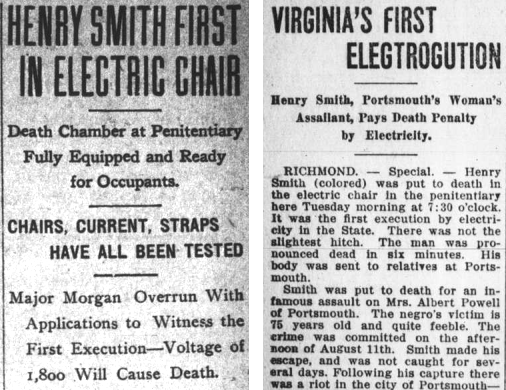
the first electrocution was on October 13, 1908
Source: Virginia Chronicle, News Leader (September 16, 1908) and Culpeper Enterprise (October 23, 1908)
There were seven electrocutions before the last prisoner was executed by the process of hanging. Joel Payne, a black man convicted of murder, was hung to death on April 9, 1909. The first woman to be electrocuted, Virginia Christian, died in the electric chair on August 16, 1912.
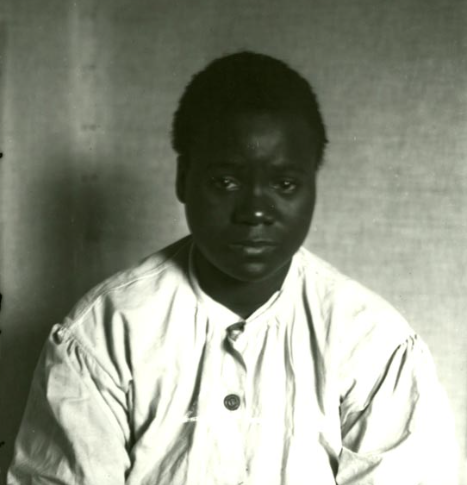
Virginia Christian ended up being the next-to-last woman executed by the Commonwealth of Virginia
Source: The UnCommonwealth blog, Library of Virginia, Virginia Christian: The Last Woman Executed by Virginia? (September 14, 2010)
Virginia never had a cyanide gas chamber; that technology was implemented by other states after Virginia had adopted the electric chair.
The first execution in 1908 had been judged a success. In the annual report of the penitentiary physician, he judged that it was:10
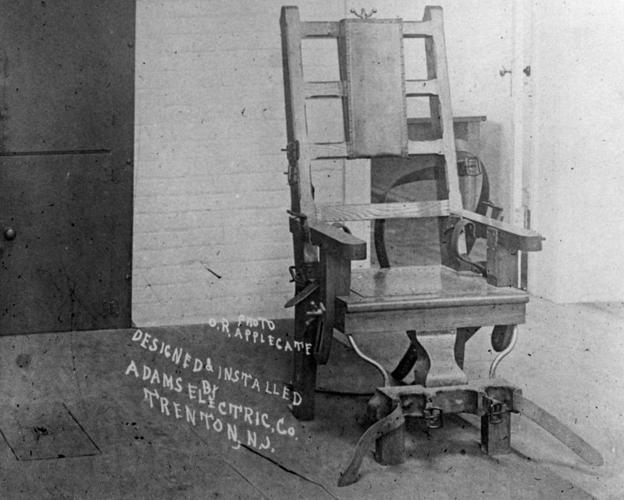
the first electric chair in Virginia
Source: Governor of Virginia, Governor Northam Signs Law Repealing Death Penalty in Virginia (March 14, 2021)
In 1952, an electrocution was delayed almost two months because a lightning strike disabled the power line into the Virginia State Penitentiary.
A de facto moratorium with no executions began in Virginia in 1962, as lawyers argued that the death penalty was a cruel and unusual punishment. he US Supreme court ruled in its 1972 Furman v. Georgia decision that the application of the death penalty was cruel and unusual punishment, because it had been applied in a capricious or discriminatory manner. Those on death row had their sentences commuted to life imprisonment. The oak electric chair in Virginia, which had been made originally made by prisoners, was placed in storage.
In order to comply with the US Supreme Court requirements, in 1975 and 1977 the General Assembly revised the laws under which a person could be sentenced to death.
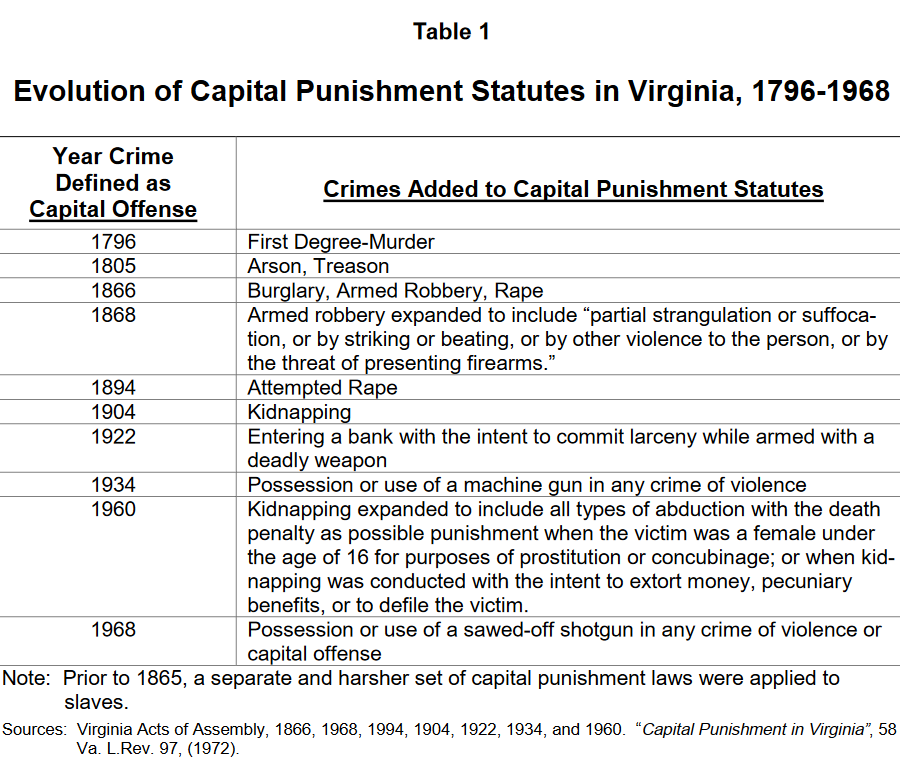
the General Assembly determined what were "capital crimes" that could be punished by execution
Source: Joint Legislative Audit and Review Commission (JLARC), Review of Virginia's System of Capital Punishment (January 15, 2002, Table 1)
In 1976, the US Supreme Court decided that the death penalty was a legal punishment, acceptable under the US Constitution. Execution, by itself, was not a "cruel and unusual punishment."
The electric chair was reinstalled in 1977 in the basement of "A Building" at the Virginia State Penitentiary. It was used again for the first time in 1982 o execute Frank J. Coppola, a convicted murderer and, unusually, a white man sentenced to death.
Virginia opened a new penitentiary near the Town of Boydton in Mecklenburg County in 1977, and transferred all male Death Row inmates to that facility. Prisoners about to be executed were returned to the state penitentiary in Richmond 15 days before the scheduled execution.
The last meal was served on Spring Street, even after Death Row moved to Mecklenburg County, until the Virginia State Penitentiary was closed in 1990. After the meal, the inmate's head and right lower leg were shaved. A sponge soaked in brine was placed inside a spring-loaded piece of metal and clamped onto the right leg. A similar sponge was inserted into a spring-loaded cap placed on the inmate's head.
A natural sea sponge was always used in Virginia. When Florida substituted a synthetic sponge once, it caught fire and foot-long flames shot out from the mask during the execution.
The final step required two guards to press buttons that allowed electricity to surge through the head and the heart before exiting the leg of the prisoner. Both buttons activated the circuit; there was no "dummy" button allowing a guard to think his action had not been the cause of the prisoner's death.
The first jolt of electricity was intended to short-circuit the body's system for transmitting information through the nerves, causing the prisoner to lose consciousness and feel nothing afterwards. Though the first charge had enough amperage to kill the prisoner, the second jolt ensured the heart was stopped.
The guards in the execution chamber were trained to place Vaseline in their nostrils because the prisoner's body would smoke. After an execution, the guards soaked their clothing for several days before washing, on order to remove the smell.11
One man was on the execution detail for 62 prisoners between 1984-1999. He described the last stage of the electric chair process:12
Problems with two executions led the General Assembly to authorize the use of lethal injection as an alternative in 1994. In 1990, one prisoner had blood leak below his mask after the first 55-second jolt of electricity, and started to bleed from his eyes. State officials claimed later that the froth bubbling on his lower lip, which alarmed the witnesses, was from a nosebleed.
In 1990, guards almost electrocuted the prison chaplain. After a prisoner was put into the chair, with electric cables attached to the skullcap and his ankle, the execution was delayed to ensure the governor had time to provide a last-minute reprieve. The chaplain provided comfort during the delay, touching both the prisoner's hand and neck. When a guard suddenly shouted, the chaplain pulled his hands away - and quickly saw the prisoner go rigid, as the first surge of electricity passed through his body.
In 1991, the prisoner still had a pulse after the first cycle of electric charges, and a second cycle was necessary. At the time, the first surge in the cycle was 1,725 volts for 10 seconds intended to stop the heart. It was followed by 240 volts for about 90 seconds, intended to cause brain death.
Later, by 1994, the state had updated the electric chair. The first surge was a 30-second shock with 1,825 volts. The second surge, administered three-five seconds, was a 60-second shock with 240 volts. If necessary, guards could press the buttons again to deliver a second cycle of electricity to ensure death.
Based on the memories of a man on the execution detail between 1984-1999, the pattern of the surges were revised more than once. When the electric chair was finally retired in 2021:13
Source: werewolfmanjackal, Execution by electric chair explained at Virginia State Prison
The Mecklenburg Correctional Facility was supposed to be a shining example of a high-security facility, eliminating escapes before prisoners were transferred to the site of the electric chair. However, Mecklenburg became the site of the largest escape of Death Row inmates in United States history.
Six men escaped in 1984. One slipped into the control room for the cell block and overpowered the guard. The prisoners then radioed other guards and captured them as they entered the cell block. Using shanks made from lawnmower blades, they forced the guards to take off their uniforms. Some inmates protected the guards from retribution, while others dressed as guards.
To get out of the cell block and out beyond the fence, the six escapees dressed in uniforms fooled other guards into thinking there was an urgent need to open the gates to get a bomb out of the facility. The bomb was actually a TV set covered by a sheet, which the escapees sprayed with fire extinguishers as they jumped into a prison van.
All six were caught within three weeks - two in North Carolina, two in Vermont, and two in Philadelphia - and eventually executed. The warden was demoted, and procedures changed so there were no other escapes from Virginia's Death Row. The guards seized by the inmates during the escape were not harmed physically, but one of them described 35 years later how the experience had affected him:14
The state penitentiary in Richmond was closed at the end of 1990. All other remaining inmates, those who had not been sent to Death Row at the Mecklenburg Correctional Facility, were moved to Greensville Correctional Center in Greensville County or Keen Mountain Correctional Center in Buchanan County.
A chaplain working on death row had similar trauma, though his came from the experience of watching prisoners die from elctrocution:15
On December 13, 1990, Buddy Earl Justus became the last person to be electrocuted at the Virginia State Penitentiary. The last remaining prisoners were moved out the next day.
The electric chair in the basement of A Building in the state penitentiary remained operating in Richmond for several more months. The state had a execution scheduled in February 1991, and the electrical grid at the Greensville Correctional Center in Jarratt was not yet capable of handling the electrical demand for operating the chair. The electric chair remained on standby at the old state penitentiary in Richmond until the prisoner was ultimately pardoned rather than executed.16
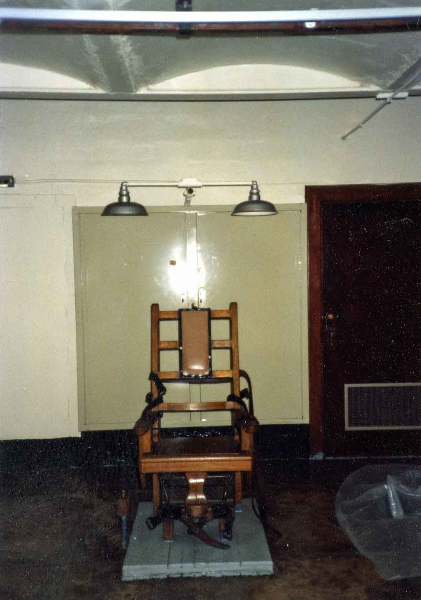
the electric chair was moved to Greensville Correctional Center in Jarratt in 1991
Source: Library of Virginia, Virginia Memory, "Down In The Shadow Of The Penitentiary:" The Closing Of The Virginia Penitentiary (February 22, 2017)
The electric chair was moved in 1991 to the Greensville Correctional Center, and it was first used there on July 25, 1991. Albert J. Clozza was the first prisoner to be transported from Death Row at Mecklenburg Correctional Facility to the Greensville Correctional Center (rather than the state penitentiary) for execution. He had been convicted of rape and sodomy of a 13-year old girl in 1983.
When Sussex I State Prison in Waverly opened in 1998, Death Row was moved from Mecklenburg Correctional Facility to Waverly. Prisoners scheduled for execution were transported to Greensville 15 days before the execution date.
The Mecklenburg Correctional Facility was closed in 2012, ending local jobs for 300 people, because newer facilities were more efficient. Space became available at the Green Rock facility in Chatham after Pennsylvania ended its contract to house its state prisoners in Virginia. At the time, incarceration at Green Rock cost $19,215 per inmate per year compared to $29,562 at Mecklenburg.
The closure impacted the Town of Boydton. It had issued bonds in 1997 to finance expansion of the sewage treatment plant, and relied upon payments from the Department of Corrections to cover the repayment costs. The town's annual budget in 2011 was $294,000, and it lacked the capacity to compensate for the loss of $240,000 a year from the prison in sewer fees.
The 173-acre site was transferred to Mecklenburg County in 2017. It was zoned for industrial use, and the prison structures were removed.17

the Mecklenburg Correctional Facility was closed in 2012, and buildings were removed after the state transferred the 173-acre site to the county in 2017
Source: ESRI, ArcGIS Online
Starting in 1995, most executions were by lethal injection administered at the Greensville Correctional Center. After the state began offering lethal injection as an option, only seven prisoners chose to die in the electric chair.
Between 2004-2008, the number of prisoners on death row in Virginia fluctuated between 26 to 17. By 2014, the number of prisoners held on Death Row had dropped to 8.
There were 112 executions between 1982-2017, 31 by electrocution and 81 by lethal injection. The execution of Teresa Lewis in 2010, by lethal injection at the Greensville Correctional Center, was the first of a woman in Virginia since Virginia Christian was electrocuted at the state penitentiary in Richmond in 1912. Teresa Lewis was held at the Fluvanna Correctional Center for Women before transfer to the Greensville Correctional Center.
She was executed on September 23, 2010, after being convicted of hiring two men to kill her husband and stepson. The men were sentenced to life in prison; Theresa Lewis was sentenced to death. She was the only woman put to death legally in Virginia in the 21st Century.
Since 1982 an additional five prisoners committed suicide, and two others died from natural causes while on death row before the scheduled date of their execution. There have been 29 prisoners removed from death row after their sentences were modified by court order or executive pardon.18
The last execution by the Commonwealth of Virginia was of Robert Charles Gleason Jr. on January 16, 2013. He had been sentenced to life originally for committing murder, but while incarcerated he killed two other inmates. Gleason chose electrocution.19
The General Assembly abolished the death penalty in 2021. Governor Northam signed the legislation on March 24, 2021 at the Greensville Correction Center. At that time, Virginia had executed more prisoners than any of the other 49 states.
The decision to abolish the death penalty was driven by the racial bias in its use. As the signing ceremony, the justice reform organizer for the Virginia Interfaith Center for Public Policy said:20
With the electrocutions of Henry Smith on September 8, 1908 and Robert Charles Gleason Jr. on January 16, 2013, the electric chair was used to administer the death penalty to 267 people in Virginia. With the execution of Dana Ray Edmonds on 1985 and William Charles Morva on July 6, 2017, the state administered lethal injections to 81 people.
In 2022, Governor Ralph Northam donated the electric chair and the gurney used for lethal injections to the Virginia Museum of History and Culture.21
Unknown to the Department of Corrections, an employee donated tape recordings, Polaroid photographs, and other records of executions to the Library of Virginia. Those documents revealed that the death certificates listed the cause of death as "homicide." In early 2023. National Public Radio broadcast some of the recordings of the last seconds of a prisoner's life as guards went through their procedures inside the execution chamber. Within months, the Department of Corrections had requested the tapes be returned to the state agency, the library complied, and public access was restricted.
An author who wrote about Virginia's abolition of the death penalty disputed the claim that public access would create issues with future executions, since the death penalty had been abolished. His opinion was:22
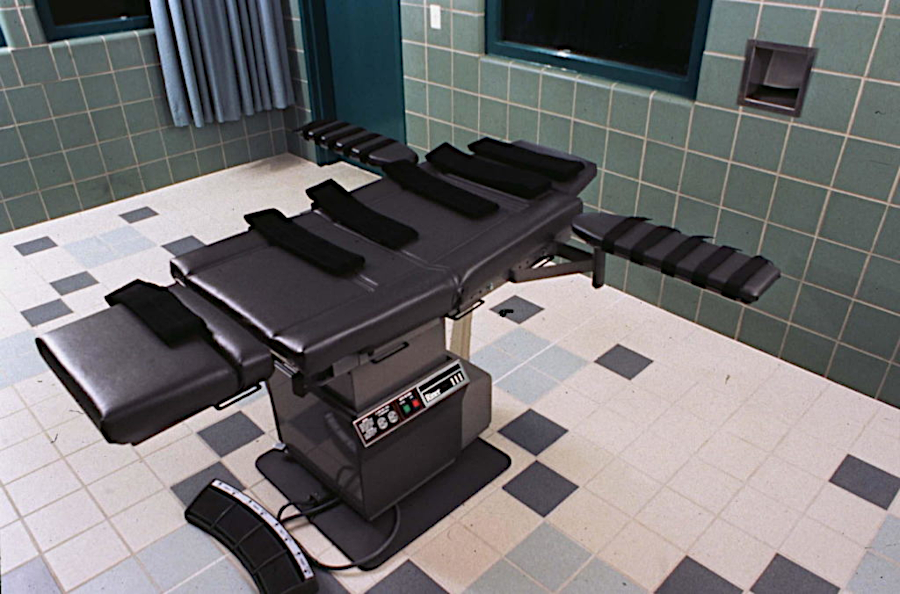
Federal executions occur by lethal injection at the United States Penitentiary in Terre Haute, Indiana
Source: Death Penalty News, In The Shadow Of The Federal Death Chamber, Executions Are On Hold — For Now (December 29, 2019)
Just before Christmas in 2024, President Biden commuted the death sentences of 37 of 40 Federal prisoners. Seven inmates on death row for murders who had committed murders in Virginia received commutations. They had been convicted of drug-related killings, murder for hire, killing a fellow prisoner, and killing a fellow Marine. Two had killed women; one had been the first person sentenced under the Violence Against Women Act. After the president's action (a commutation, not a pardon), the seven murderers were obliged to serve life imprisonment without the possibility of parole.
President Biden imposed a moratorium on executions during his term, but his proposal to end the federal death penalty was not passed by the US Congress. President Trump had authorized execution of 13 Federal prisoners in his 2017-2021 term, including the only woman on the Federal death row, and promised to authorize executions when he took office again in 2025.
All of the executions during President Trump's first term were done by lethal injection at the United States Penitentiary in Terre Haute, Indiana. A total of 50 Federal executions occurred after 1927; none were done in a Virginia prison.
The three prisoners remaining on Federal death row at the end of Biden's term were guilty of mass executions. The only case during his term in which the Federal government sought the death penalty was also a mass murder.23
Two prisoners, not associated with Virginia crimes, sought to reject the communtations by President Biden. They declined to sign the paperwork to receive clemency because it would limit their chances on appeal of their convictions. In cases involving the death penalty, Federal appeal courts apply "heightened scrutiny" in searching for errors that justify a retrial or dismissal. The two on death row preferred getting the extra judical attention associated with a death penalty case over a sentence of life in prison.
However, in 1927 the US Supreme Court decided that a convict's consent to a reprieve or pardon is not required, in a case after President Taft commuted a sentence of death to life imprisonment. The ruling included:24
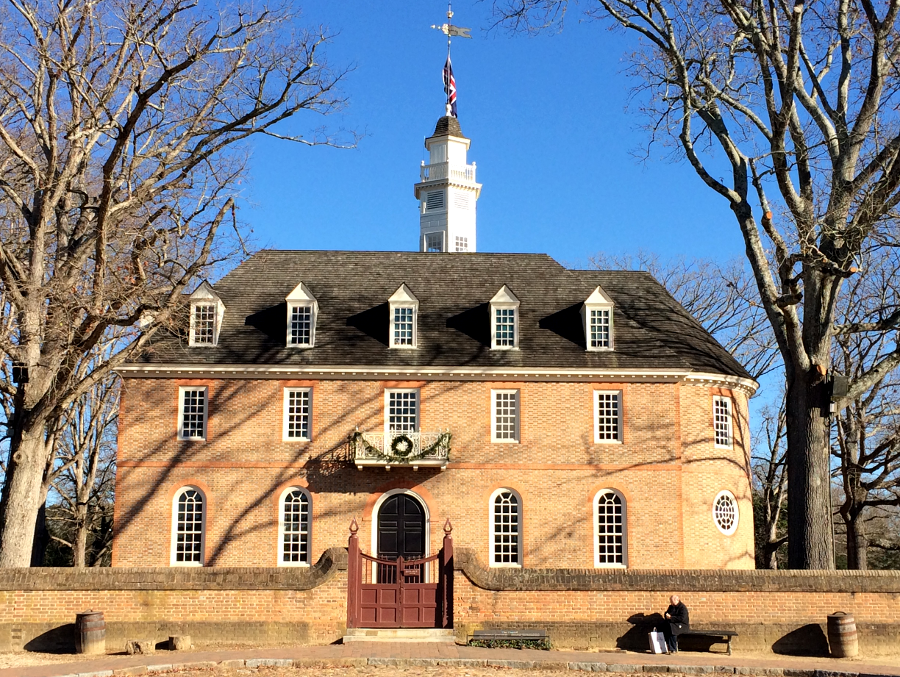
between 1699-1780, the General Court handled capital cases in the Capitol building in Williamsburg and hangings were done at the gallows on what is now Capitol Landing Road
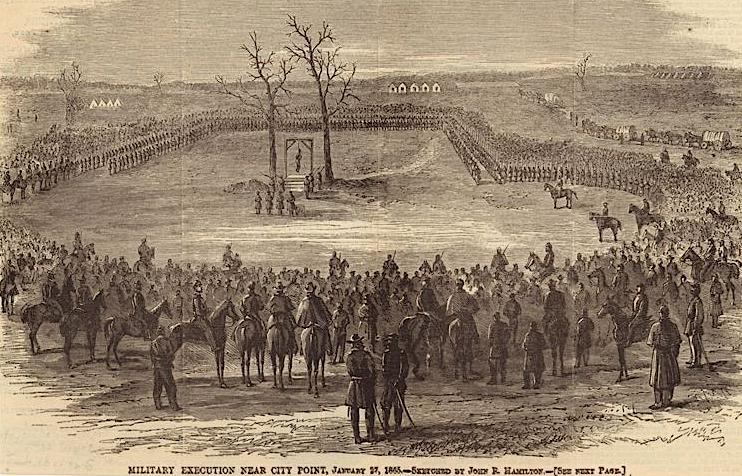
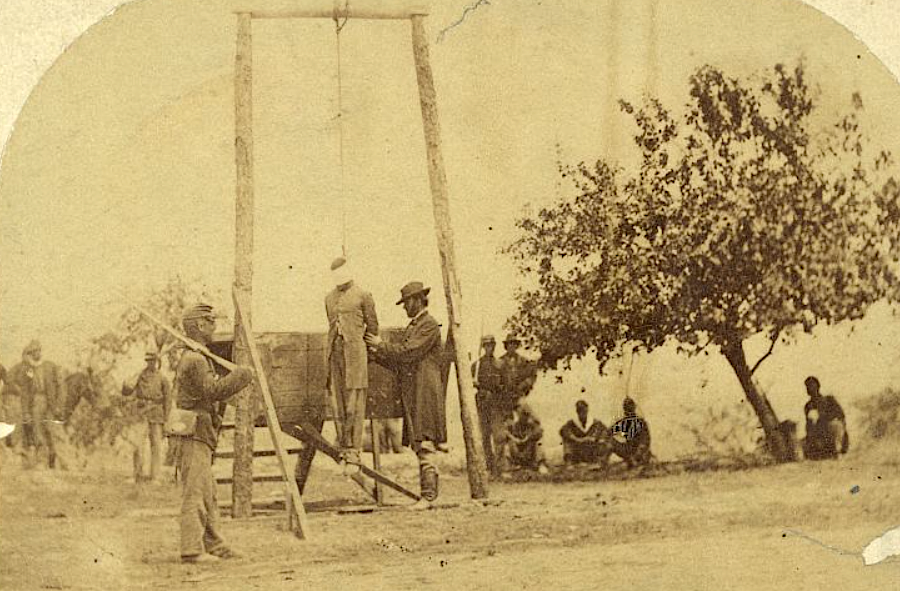
military tribunals sentenced deserters to hang during the Civil War
Source: New York Public Library, Military execution near City Point, January 27, 1865 (from Harper's Weekly, February 18, 1865); Library of Congress, Execution of Private William Johnson, 23 regt., U.S.C.T.
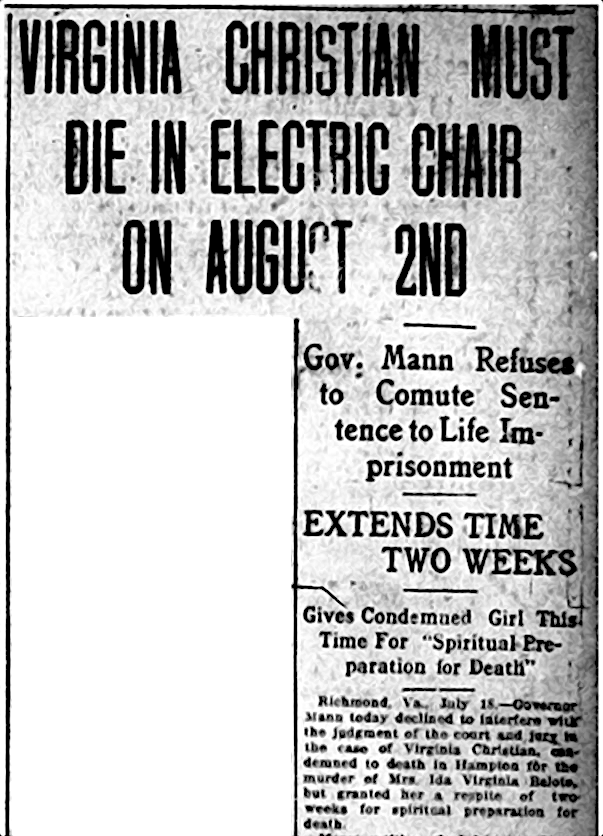
Governor Mann declined in 1912 to pardon a woman sentenced to death, but did postpone the execution by two weeks
Source: Virginia Memory, Library of Virginia, Virginia Christian Must Die in Electric Chair on August 2nd